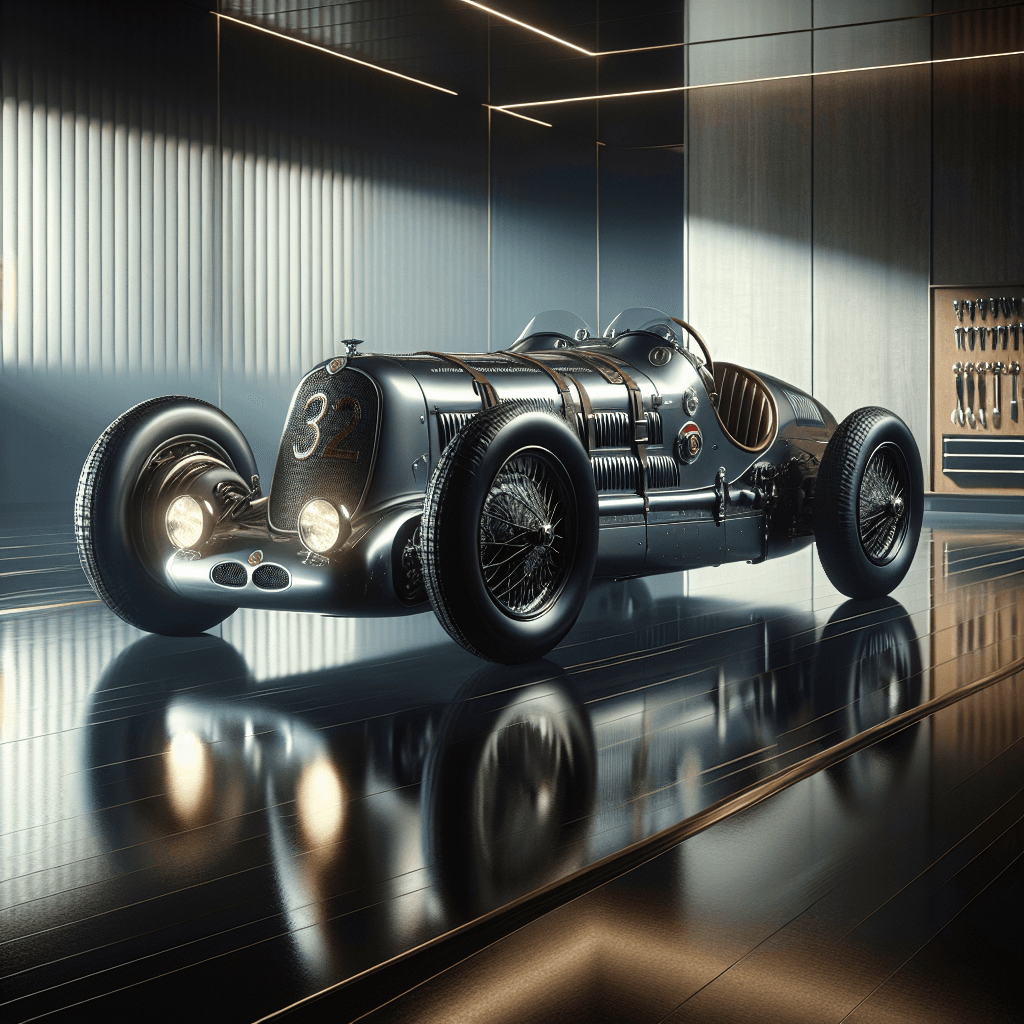How this masterpiece set the benchmark for pre-war sports cars
The Alfa Romeo 8C 2900 stands not merely as a vehicle but as a pinnacle of pre-war automotive artistry and engineering. This masterpiece set an unparalleled standard in the realm of luxury sports cars, combining breathtaking aesthetics with groundbreaking technological advancements.
- Design and Innovation: The Birth of a Legend
- Racing Pedigree: Triumphs on the Track
- Technical Specifications: A Closer Look Under the Hood
- Cultural Impact: The 8C 2900 in the Arts and Society
- Legacy and Preservation: The Eternal Allure of the 8C 2900
Design and Innovation: The Birth of a Legend
The Alfa Romeo 8C 2900 emerged in the late 1930s as a beacon of innovation and style. Designed by the legendary Vittorio Jano, the 8C 2900 was built with both aesthetics and performance in mind. Its body, often crafted by renowned coachbuilders such as Touring of Milan, showcased flowing lines and an elegance that belied its powerful capabilities.
The car’s design was a harmonious blend of form and function, featuring a long hood and a sleek, aerodynamic profile that made it instantly recognizable. The 8C 2900’s beauty was matched by its advanced engineering, including a supercharged inline-eight engine and a sophisticated suspension system, which allowed it to deliver exceptional performance without compromising on comfort or style.
- Aluminum Bodywork: Utilizing aluminum for the body, the car achieved a lighter weight, enhancing its speed and agility.
- Independent Suspension: A rarity at the time, this feature provided superior handling and stability at high speeds.
Racing Pedigree: Triumphs on the Track
The Alfa Romeo 8C 2900 was not only a marvel of automotive design but also a formidable force in racing. It dominated competitions, including the prestigious Mille Miglia, a testament to its superior engineering and performance. The 8C 2900B, in particular, is celebrated for its victories in the late 1930s, securing Alfa Romeo’s status in the annals of racing history.
These triumphs on the track were not just victories; they were emphatic statements about the capabilities of the 8C 2900, combining reliability, speed, and endurance. The car’s success in these grueling races also helped to cement its reputation among automotive enthusiasts and the general public alike, making it a symbol of high-performance motoring.
- 1938 Mille Miglia: The 8C 2900B clinched first and second places, showcasing its dominance in endurance racing.
- Le Mans: Its participation in this iconic 24-hour race further demonstrated its durability and advanced engineering.
Technical Specifications: A Closer Look Under the Hood
The heart of the Alfa Romeo 8C 2900 was its 2.9-liter, supercharged inline-eight engine, a marvel of engineering that produced between 180 to 220 horsepower. This powerplant was renowned for its ability to deliver smooth yet potent performance, making the 8C 2900 one of the fastest cars of its era.
The engine was paired with a four-speed manual transmission, providing drivers with precise control over the car’s considerable power. The 8C 2900 also featured advanced braking systems and a lightweight construction that further enhanced its performance and handling characteristics.
- Supercharged Engine: The use of a Roots-type supercharger gave the 8C 2900 an extraordinary power output, rare for cars of that period.
- Innovative Aerodynamics: Its design minimized air resistance, allowing for remarkable top speeds and better fuel efficiency.
Cultural Impact: The 8C 2900 in the Arts and Society
The Alfa Romeo 8C 2900 transcended its mechanical roots to become a cultural icon. Its elegant design and racing pedigree made it a symbol of speed, luxury, and innovation. The car was featured in contemporary media and was associated with the elite of society, enhancing its status as a symbol of prestige and the pinnacle of automotive achievement.
Moreover, the 8C 2900 has been celebrated in various forms of art, including paintings, photography, and film, often used to represent the epitome of luxury and the excitement of the racing world. Its influence extended beyond the automotive industry, impacting fashion, design, and even architecture.
- Symbol of Prestige: Owned by aristocrats and celebrities, the 8C 2900 became a status symbol, representing the height of luxury and exclusivity.
- Inspiration in Art: Artists and filmmakers often chose the 8C 2900 as a subject, captivated by its beauty and symbolic value.
Legacy and Preservation: The Eternal Allure of the 8C 2900
The legacy of the Alfa Romeo 8C 2900 continues to endure, with the car remaining a highly coveted item among collectors and enthusiasts. Its blend of artistry, innovation, and performance has ensured that it remains one of the most celebrated models in automotive history.
Preservation efforts by museums and private collectors have allowed future generations to experience the 8C 2900’s majesty firsthand. These vehicles are often the centerpiece of shows and events, where they continue to awe and inspire, much as they did decades ago.
- Museum Exhibitions: Prominent automotive museums around the world frequently feature the 8C 2900, attesting to its enduring appeal and historical significance.
- Continued Acclaim: The 8C 2900 consistently ranks at the top of lists of the greatest cars ever made, a testament to its lasting impact on car design and performance.
For further reading and to explore more about the historical significance of the Alfa Romeo 8C 2900, visit authoritative sources such as the Alfa Romeo Museum.



